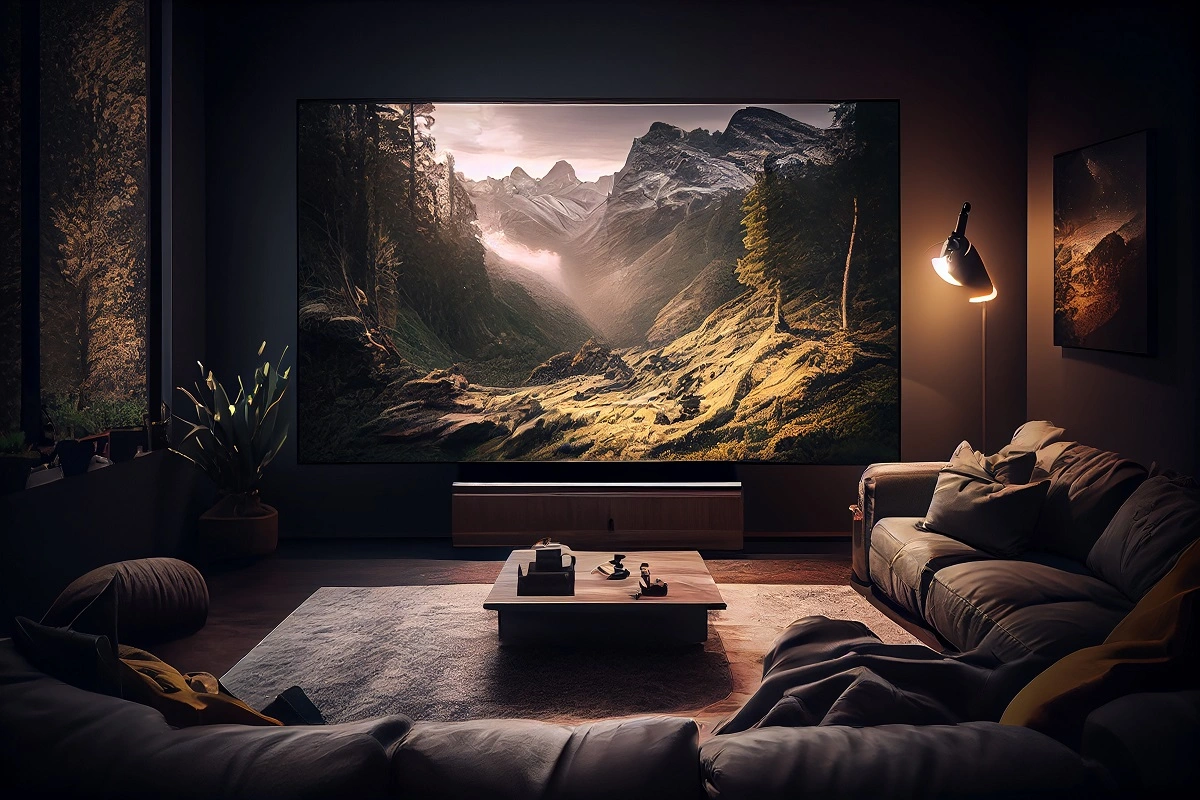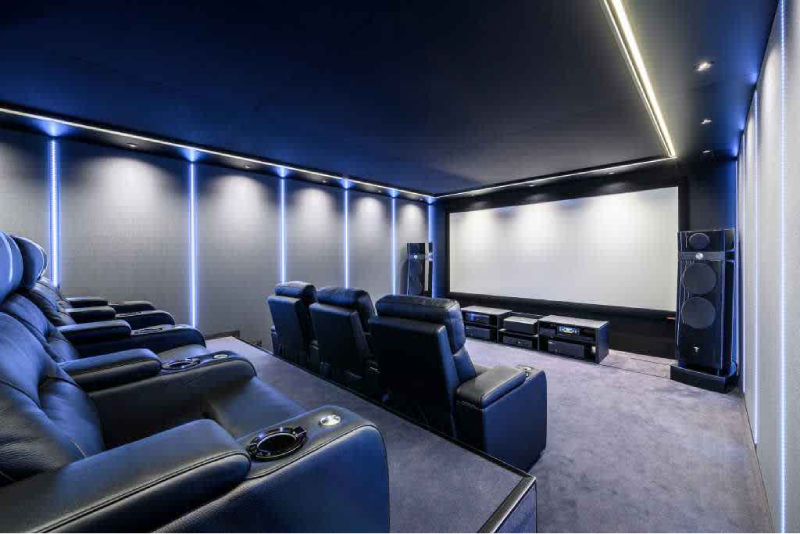Innovative Home Theater Tampa Concepts for the Stylish Home
Innovative Home Theater Tampa Concepts for the Stylish Home
Blog Article
Home Theater 101: Whatever You Need to Know for a Cinematic Experience in the house
Developing a home theater that rivals the cinematic experience of a business theater includes careful consideration of several components, including screen option, audio systems, and space design. Whether you are contemplating the ideal display dimension or the details of border audio, comprehending these principles is essential.
Choosing the Right Screen
When establishing up a home theater, selecting the ideal display can make or damage the viewing experience - home theater tampa. The display serves as the focal point of your setup, influencing picture top quality, seeing angles, and total visual. Trick factors to think about include display resolution, dimension, and kind
Initially, determine the ideal screen size based on your space measurements and seating distance. Next off, select between numerous screen types, such as fixed-frame, mechanized, or retractable screens, each offering distinct advantages.
Resolution is an additional vital aspect. For a genuinely immersive experience, think about a screen created for 4K and even 8K web content, making sure sharpness and clearness. Additionally, consider the display's gain, which impacts illumination and contrast; a higher gain can boost illumination in well-lit rooms, while a reduced gain might be better for darker atmospheres.
Choosing Sound Equipment
Audio equipment is a critical component of any home movie theater system, considerably enhancing the overall viewing experience. The selection of audio equipment can establish the deepness, clearness, and immersion of noise, crucial for developing a motion picture environment.
When picking audio devices, take into consideration a surround sound system, which generally includes a receiver, numerous audio speakers, and a subwoofer. A 5.1 or 7.1 channel system is recommended, where the initial number stands for the speakers and the second the subwoofer, providing an immersive soundscape. The receiver is the heart of the system, handling audio and video signals, and need to support modern layouts like Dolby Atmos for an improved spatial experience.
Quality speakers are crucial; seek versions that use a balanced sound account with great bass reaction. Floor-standing audio speakers can create richer sound, while shelf options conserve area. In addition, take into consideration wireless alternatives for simplicity of installment, although wired systems commonly deliver premium performance.

Ideal Seating Arrangements
Developing an ideal home cinema experience pivots dramatically on optimum seating plans. The plan of seats plays a crucial role in both comfort and watching high quality, directly impacting the total motion picture experience.
First, think about the screen dimension and checking out distance. An usual guideline is to position seats at a range roughly 1.5 to 2.5 times the diagonal dimension of the screen. This makes certain an immersive experience without straining the eyes.
Next, elevation is essential. The back rows must be higher than the front to stay clear of obstructions if your seats is in a tiered format. For level seating, make certain that the front row is not as well near to the display, and that every person has a clear line of vision.
In addition, think about the arrangement in regards to social characteristics. Group seats can enhance the public experience, while individual seats might be preferred for personal watching.

Lastly, prioritize convenience with ergonomic seats that supports prolonged watching durations. Incorporating reclining chairs or supported seats can considerably boost the experience, making the home theater a favored location for both entertainment and leisure.
Lighting and Setting
Effective illumination and setting are important parts of a properly designed home cinema, as they significantly affect the viewing experience. The best lights can boost the cinematic feeling, while inadequate selections can detract from it. For optimal results, think about a split lights strategy that includes ambient, task, and accent illumination.
Ambient illumination provides general illumination, making certain that the room is not completely dark, which can strain the eyes. Dimmer buttons are highly recommended, permitting adjustments based on the content being seen. Task lighting, such as wall sconces or floor lights, supplies useful lighting for tasks like analysis or navigating the area without interrupting the general atmosphere.
Accent illumination can be utilized to highlight architectural attributes or produce centerpieces, adding depth and passion to the room. LED strip lights behind screens or along home theater installation tampa shelves can provide a refined glow that enhances the aesthetic experience without overwhelming the viewer.

Wiring and Installation Tips
A tactical electrical wiring setup is crucial for achieving optimum efficiency in your home cinema system. Correct electrical wiring not only makes certain high-grade sound and video signals but also boosts the general aesthetic of your room. Begin by mapping out your layout, recognizing where each element will be positioned, including your screen, audio speakers, and receiver.
When choosing cable televisions, focus on top notch, appropriately assessed circuitry to minimize signal loss. HDMI cables must be used for video clip connections, while speaker cable need to match the specifications of your audio speakers and amplifier. Decide for in-wall rated wires to abide by safety and security requirements and keep a clean appearance.

Verdict
In summary, producing a phenomenal home cinema experience requires careful consideration of various elements, including screen selection, audio equipment, seating arrangements, lighting, and wiring. By prioritizing these factors, a cinematic environment can be efficiently reproduced, permitting for immersive watching experiences that rival traditional theater setups.
Developing a home cinema that measures up to the motion picture experience of an industrial theatre includes careful consideration of numerous parts, consisting of display choice, audio systems, and room format.When establishing up a home movie theater, selecting the right display can make or damage the seeing experience. Next, choose in between different screen kinds, such as fixed-frame, mechanized, or retractable screens, each offering distinctive advantages. For an absolutely immersive experience, think about a screen designed for 4K or also 8K material, ensuring intensity and clearness.In summary, developing a phenomenal home movie theater experience requires cautious factor to consider of various components, including display option, audio tools, seating plans, lights, and circuitry.
Report this page